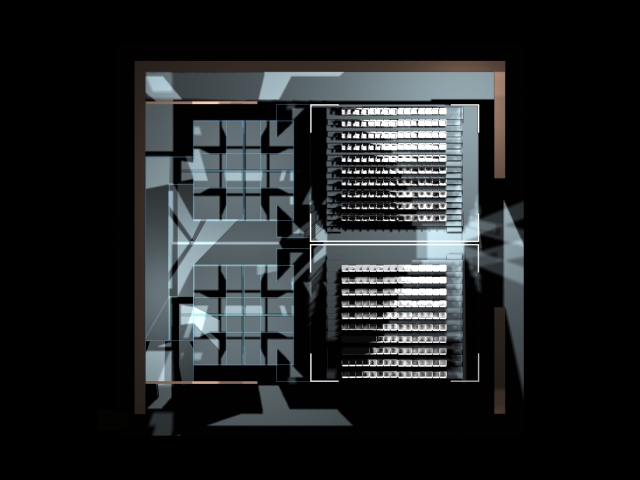See-Saw

See-Saw, Quarantine’s first piece, was made at Tramway Glasgow in 2000, with 75 people from Glasgow. A work-in-progress version of See-Saw was made at Northern Stage, Newcastle in 1998, as part of the process of setting up Quarantine. The whole performance took place from within two opposing seating bank; performers and audience intermingled. The youngest performer was 5 weeks old when we started rehearsal, the eldest 75. They were a mix of people from all kinds of backgrounds. Most of them had never done anything like this before.
At nearby Pollockshields East station a man holding a bunch of flowers waited for a train to arrive. Across the road a group of teenage boys were flirting, throwing chips at a group of girls. A middle-aged man was standing in the shadows, his long coat just about covering his Elvis costume. There was milk spilt in the theatre doorway. All of this was part of See-Saw.
How we made it
“In many ways See-Saw established a kind of template for a Quarantine project. Its’ form was new and surprising for its’ audience; it placed audience and performers in an intimate relationship framed by the epic scale of Tramway 1; it was firmly located in Glasgow and the lives of people we worked with; its performers were from a huge range of ages and social backgrounds; it had music, dancing, a fragmented text and a trajectory based more on emotional arcs than trying to tell a story.
At the beginning of the show when the curtain fell, nothing happened for 5 minutes. The audience sat and stared at each other. At every performance, a few people would wave, trying to catch their own reflection in what they thought was a giant mirror…
...and at the end of each performance, when applause came, nobody wanted to stop. It went on for minutes – perhaps because people were clapping each other, the people around, opposite and next to them - and probably themselves.
Over the years of course our approach to making work has shifted. Rather than dramatising reality, perhaps now we attempt to create situations and circumstances, a dramaturgy of experience for encounters with people, a focus on co-presence in a space, a willingness or desire to not know what might emerge each time within the frame we’ve considered and made.
One day, knowing what we do now, I hope that we’ll do See-Saw again, and see what happens...”
Richard Gregory, Director (a reflection in mid-2022)
Concept & Direction: Richard Gregory
Co-devisor/Sensory Artist: Renny O’Shea
Design: Simon Banham
Dramaturg: Matthew Dunster
Choreographer: Jane Mason
Composer/Musical Director: Olly Fox
Lighting Designer: Lucy Carter
Project Animateur: Donna Rutherford
Our funders
Dates
PAST DATES
2000 | Tramway, Glasgow